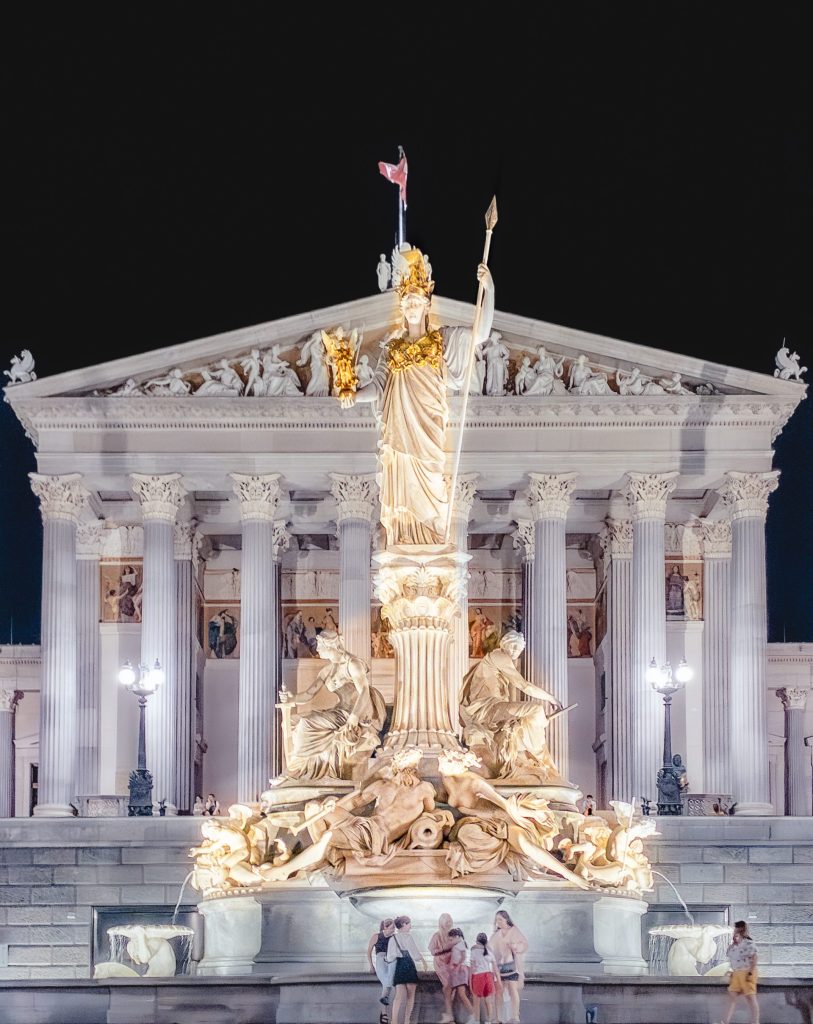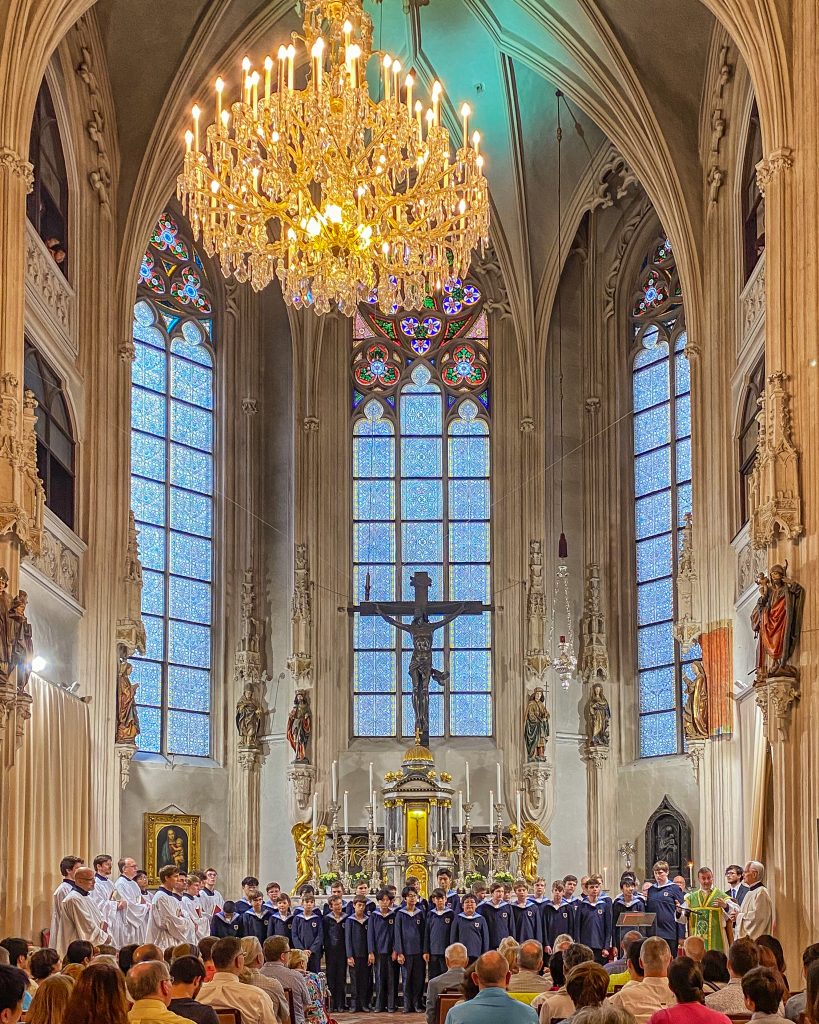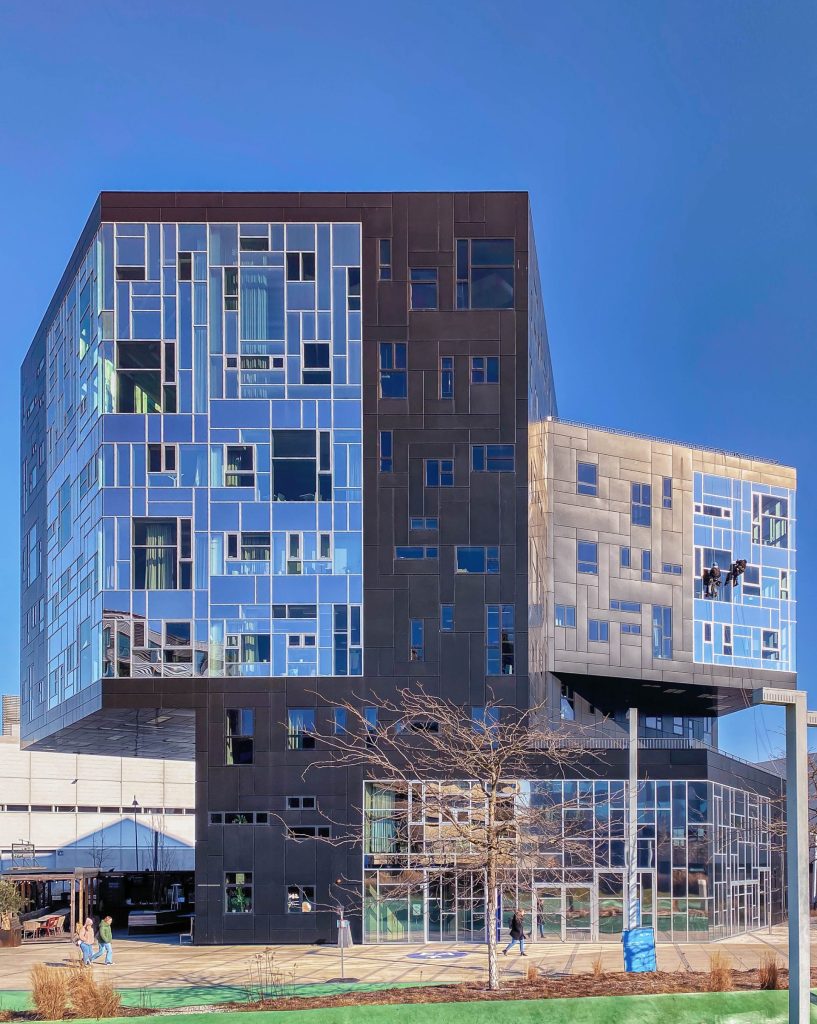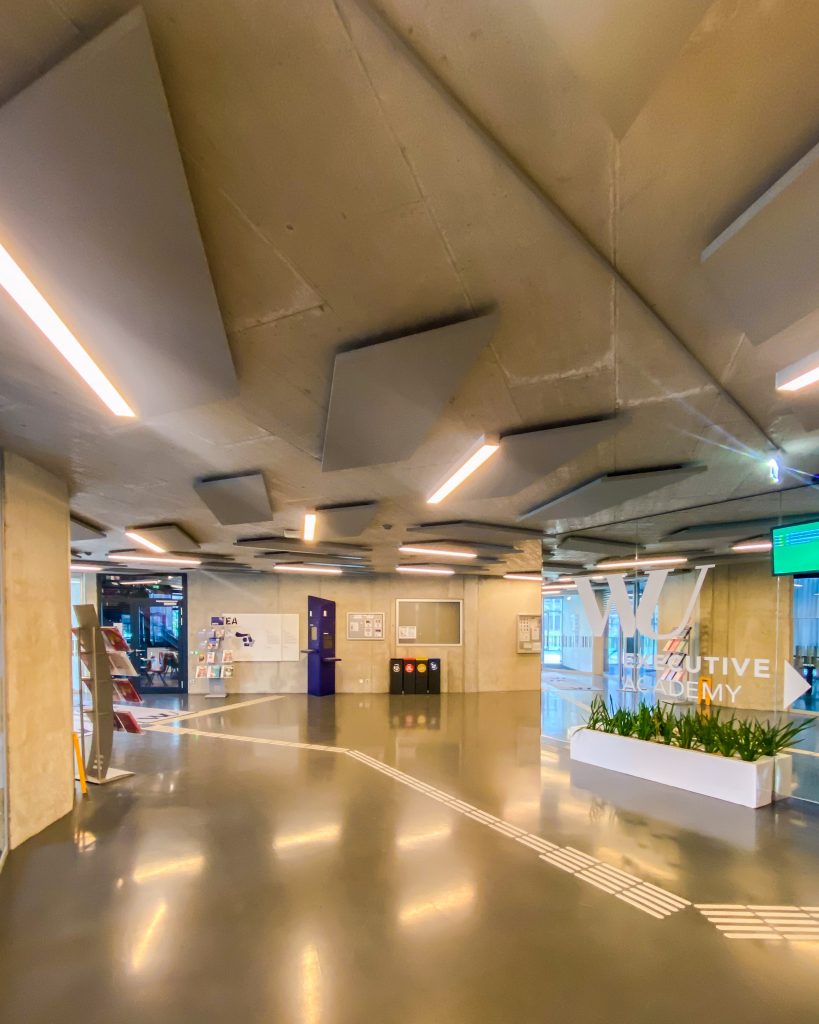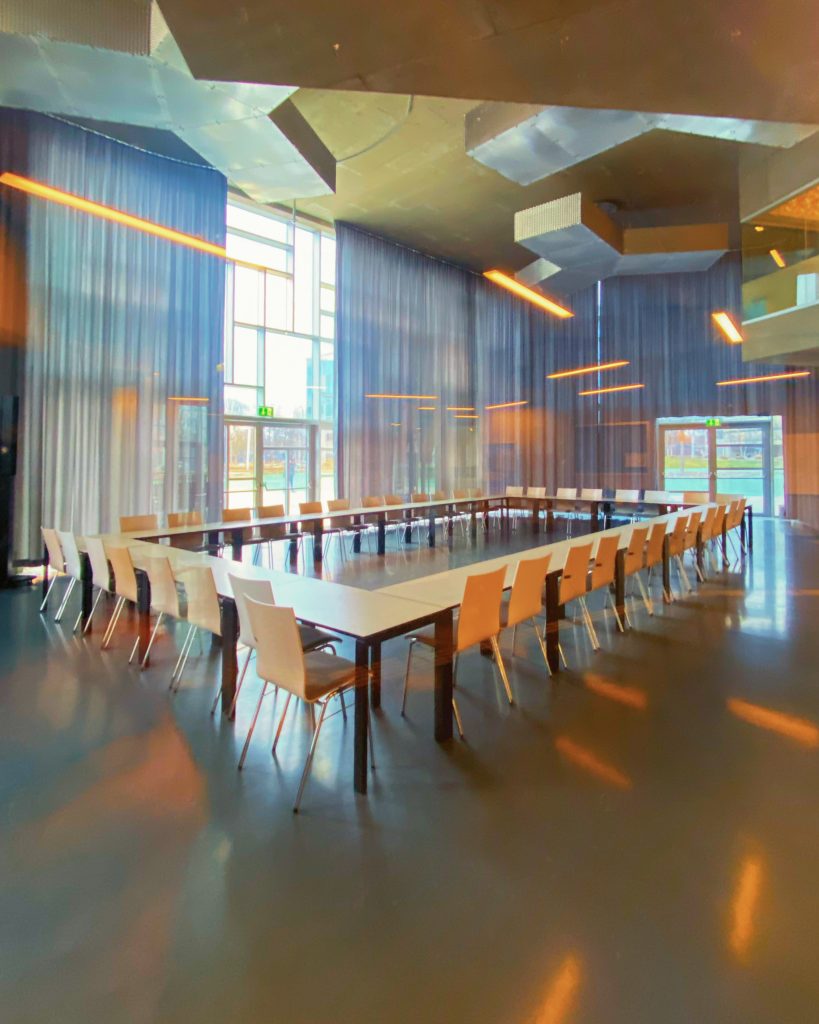At the Cobenzl
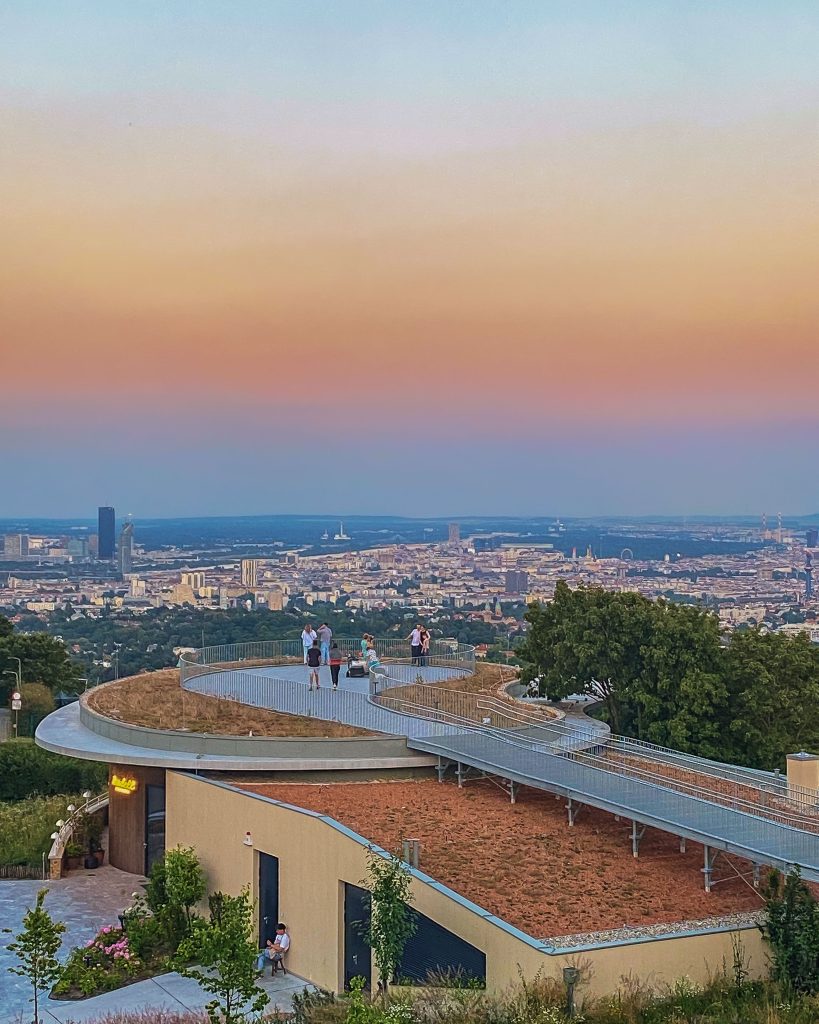
On the way to Kahlenberg you can discover one of the most beautiful viewpoints in Vienna at Cobenzl (Reisenberg) in the 19th district. Originally owned by the Jesuits, the mountain came in the 18th century to Johann Philipp Count Cobenzl, who, in addition to a castle-like building and gardens, also had a farm with dairy established.
At the end of the 19th century, a construction company converted the property into a hotel restaurant, and later the municipality of Vienna took over the site. The original castle hotel was devastated during WWII, then remodeled and finally demolished in 1966.
On the hill, which is easily accessible due to the construction of the Höhenstraße in the 1930s, a Rondell café and a newly built small castle were later built, but due to conflicts with the operators, the Cobenzl fell into a slumber. In the course of a new takeover and recently completed renovation, a freely accessible panorama house was also added and can now also be used again as a prestigious event location.
